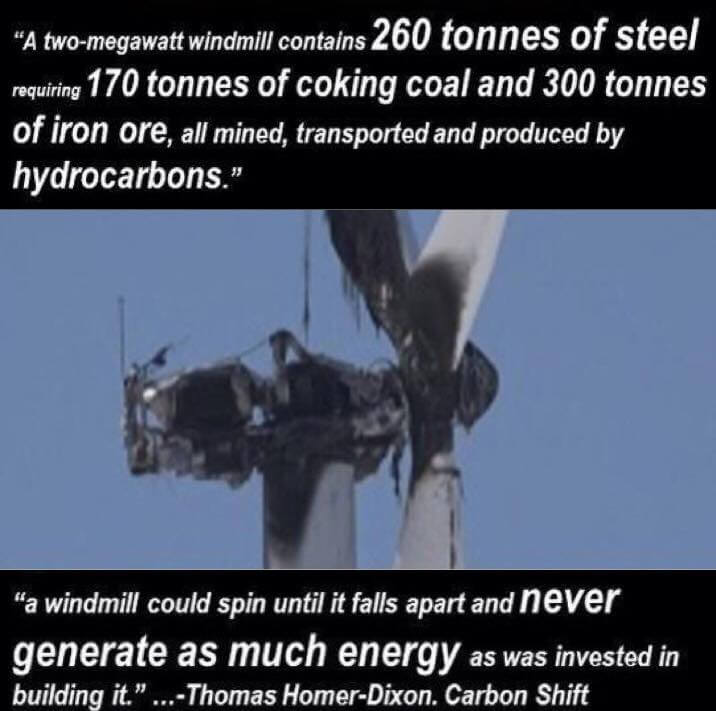Validity of Wind Energy

It pains me greatly to see disinformation like this spread around. The EROI (energy return on investment) associated with wind turbines averages about 21, meaning that wind turbines return 21 KWhrs for every one that went into the extraction of the resources, manufacturing, installation, maintenance and decommissioning.
Here’s what irritates me most about crap like this: Accepting it means believing that everyone involved in the wind industry is involved in a massive enterprise, deliberately designed to wreck the planet. Think of how asinine that is. GE’s wind business alone employs more than 22,000 people in more than 80 countries, all overseen by a huge superstructure of senior executives and corporate directors. All these people are involved in a conspiracy to destroy our environment? Come on.

Craig,
The link you provided doesn’t appear to exist (Wiki notation, We could not find the above page on our servers.”).
Er,…..forgive me for noticing, but you seem more and more erratic and inconsistent.
On the one hand you castigate large corporations on principle, yet regard GE as a paragon of virtue staffed by incorruptible saints !
You do know GE lists it’s activities as:
Aircraft engines
Electrical distribution
Electric motors
Energy
Finance
Gas
Health care
Lighting
Locomotives
Oil
Software
Water
Weapons
Wind turbines
GE Oil & Gas is roughly three times larger and 7 times more profitable than GE’s Wind division, but both are dwarfed by GE’s weapons division, which is 10 times larger and vastly more profitable.
I know you are an enthusiastic supporter of the Wind industry, but even GE (the world second largest manufacturer) warns of limitations and over enthusiastic expectations.
Harnessing wind industry is very dependent on location. The industry is heavily burdened by logistical difficulties and often environmental problems. Transmission losses and infrastructure costs are a considerable restriction.
Since in most locations the Wind doesn’t blow reliably, turbines usually function at about 30% capacity or below. Serious storms or high winds also affect turbines unfavorably, particularly when struck by lightning.
Maintenance is seldom a factor dwelt on by Wind enthusiasts, but aging turbines can be very expensive to repair. Aging turbines also drop in productivity.
On shore Turbines are becoming the subject of disputes when trees grow larger as previously open farmland or moor adopts soil conservation practices with arbor wind breaks becoming established.
It would appear your outrage is not shared by the new CEO of LM Wind Power (formerly GE Renewable Energy) Duncan Berry.
Mr Berry, like his predecessor , Merc De Jong, candidly agrees with the assessment of Warren Buffet (a huge Wind investor) that most Wind Energy projects are only profitable where large government incentives, subsidies or market mandates are available.
Wind power technology requires a great deal of infrastructure and exactly the right location to make any significant contribution. The turbines do kill and interfere with migrating birds insects, marine life etc, including other environmental harm.
Nevertheless, the technology is improving and the industry is developing. Like most alternate energy technologies it suffers from overly optimistic supporters and extravagant claims both for and against.